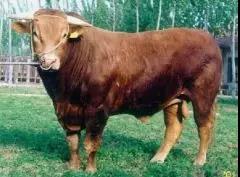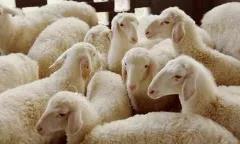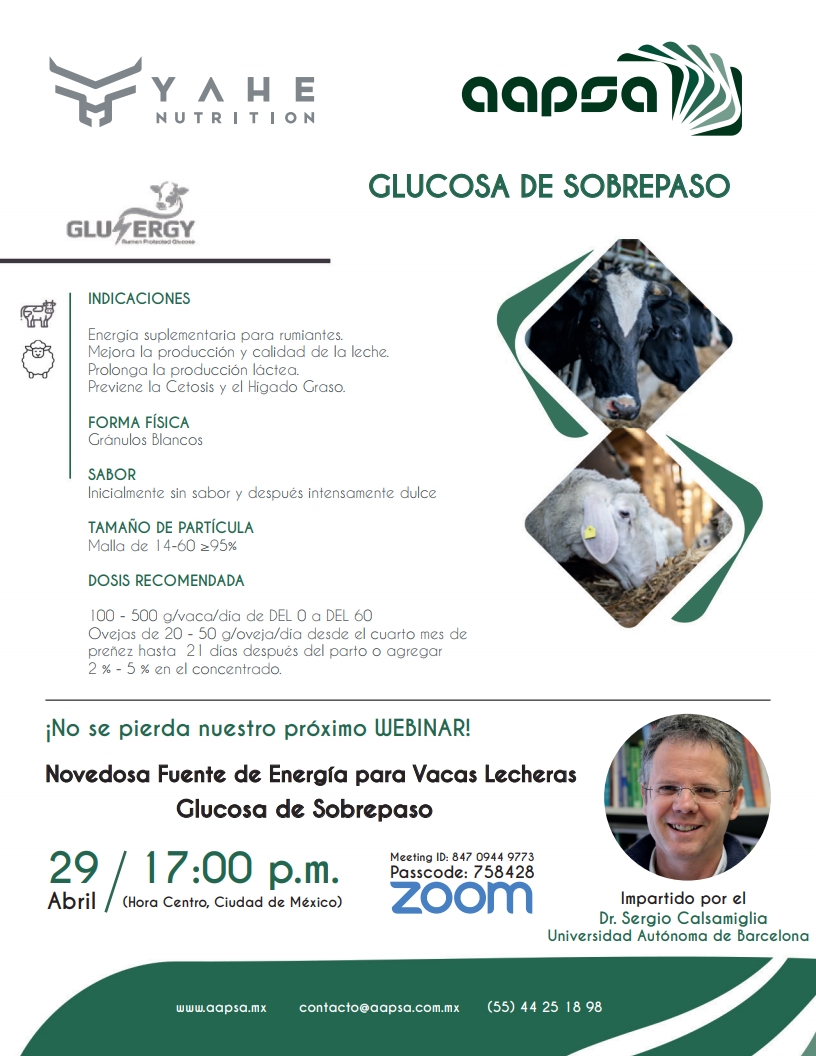Effect of yeast products on fattening cattle and sheep
In recent years, the market has been flooded with various kinds of fermented materials, which can be described as various names and uneven quality; fermentation products have particularly high requirements on production equipment, environmental temperature, humidity, pH value, carrier, bacterial liquid quality and other conditions, which belongs to the bio-biochemical production process It is similar to the production conditions of vaccines and drugs, but some "companies" are all "hand-workshop" -type production operators. They show customers the sense of carrier materials other than Jinyu; they cover up and ignore the types of bacteria Content and activity, and the latter is the core of this type of product, but this "handicraft workshop" simply does not have such a production capacity, so can you believe the quality and efficacy of the product? Many companies that produce fermented materials do not have ordinary production. Companies with premixes, concentrates, and concentrates have large investments. Can they produce good fermented products?

1. Digestion problems of fattening cattle and sheep
In ruminants, the feeding conditions of fattening cows, sheep and dairy cows, beef cattle breeding cows, and breeding ewes are different, and the rumen pH is also different. The former has a high proportion of concentrate and a poor internal environment in the rumen. The pH of the rumen fluid is often more Low, on the verge of acidosis; the latter due to the relatively low proportion of concentrate, the type and quality of forage and the nutritional balance of the diet are better, and the rumen pH is in the range of 6-6.8.
The ruminants used for reproduction and lactation have a service life of 5-7 years. The ratio of diet to crude is reasonable at each production stage. The rumen pH is 6-6.8. The bacteria, protozoa and fungi in the rumen are stable and can be fermented normally. It can decompose fiber, starch, protein in the diet, and can synthesize vitamin K, B vitamins, various digestive enzymes, fatty acids, bacterial protein, etc. using rumen substrates, so the rumen function is normal, and there are relatively few diseases in the rumen system.
In order to achieve high efficiency, high-fat fattening sheep must shorten the feeding cycle and increase the slaughter rate. It is necessary to increase the dry matter intake and lean-to-thickness ratio. Especially in the middle and late fattening, they are basically on the verge of rumen acidosis, which is not well controlled. Is acidosis. Therefore, to improve the ratio of lean to coarse and increase the amount of food intake, we must solve the problems of rumen poisoning and rumen accumulation.
When the rumen pH value is above 6.0, when lactic acid-producing bacteria such as Streptococcus bovis and Lactobacillus grow rapidly, the final metabolic products are mainly lactic acid, while when growing slowly, the final metabolic products are mainly acetic acid and propionic acid; when the rumen pH value drops When it is below 5.0, the number of Streptococcus bovis and Lactobacillus increases. At this time, the final metabolic product is mainly lactic acid. The lactic acid produced cannot be absorbed and utilized, and the accumulation of lactic acid causes the pH value to continue to decrease.
Lactic acid-utilizing bacteria-Cryptomonas ruminants and Megacoccus escherichia are sensitive to acidic environments, and the minimum pH values tolerated are 5.4 and 5.6 respectively, while the minimum pH values tolerated by Streptococcus bovis and Lactobacillus are 4.8, When the pH value drops below 5.5, lactic acid-producing bacteria can still produce a large amount of lactic acid, and lactic acid-utilizing bacteria are basically unable to metabolize lactic acid, causing lactic acid to accumulate in the rumen.
When the pH value continues to fall below 5.0, the final product of the growth and metabolism of lactic acid producing bacteria is mainly lactic acid, which further reduces the rumen pH. The low rumen pH environment is suitable for the growth of lactic acid-producing bacteria, but it causes the death of most rumen microorganisms including lactic acid-utilizing bacteria, which leads to the suppression of rumen peristalsis, which ultimately leads to acute rumen acidosis.
When the rumen pH is around 5.5, if the substrate and energy are insufficient, the lactic acid producing bacteria are inhibited. The final products of growth and metabolism are mainly acetic acid and propionic acid. Level, to avoid the decrease of rumen pH, manifested as subacute rumen acidosis.
There are many ways to solve rumen acidosis: ionophore antibiotics (rumen), organic acids (malic acid, succinic acid, fumaric acid, etc.) and their salts, physically effective washable fibers, buffers (added in the diet, free licking) Food), probiotics (yeast products, other fungi).
2. Classification of yeast products
Yeast products are roughly divided into feed yeast, yeast culture, live yeast, yeast cell wall (β-glucan and mannose oligosaccharide), yeast extract (hydrolysate, extract).
1. Feed yeast (single-cell protein): using industrially produced high-concentration waste liquid such as starch, molasses, wine, and monosodium glutamate as raw materials, cultivating for a period of time in a suitable temperature environment and pH range, and finally separating yeast from the fermentation tank Bacteria, made by drying; the protein can reach 50-60%, which is mainly bacterial protein, and also contains nucleic acid, group B V, lysine, fat, and unknown growth promoting factors.
2. Yeast culture: It is a kind of yeast culture product, which refers to the product made after fermentation under strict control conditions and processed together with the culture medium. The main components are culture medium, yeast and yeast metabolites. The proportion of yeast culture medium is high, and the protein content is very small, which is not a protein feed. It contains an "unknown growth factor", which is used to adjust the micro-ecological balance of the animal intestine, thereby improving the animal's production performance.
3. Active dry yeast: Unlike single-cell protein feed yeast, it is used as a probiotic in feed. Active dry yeast is a live yeast containing a small amount of emulsifier, controlling its moisture between 4-6%, isolating air and water, so that it is in a "dormant state", the yeast storage period in this state can generally reach two years As mentioned above, after the yeast in the "dormant state" is eaten by the animal into the gastrointestinal tract, it can be revived and play a biological function when exposed to water.
When the active dry yeast is below 0 ℃ and above 47 ℃, the yeast cannot grow, the optimal growth temperature is generally 20-30 ℃; the yeast can grow in the pH range of 3.0-7.5, the optimal pH value It is 4.5 to 5.0; yeast is a facultative anaerobic bacteria. Under aerobic conditions, it decomposes sugar into carbon dioxide and water and the yeast grows faster. In the absence of oxygen, yeast breaks down sugar into alcohol and carbon dioxide.
4. Yeast cell wall is to collect yeast cells after culturing the yeast to lyse the cells. After multiple washing and filtration, the soluble substances in the cells are subjected to centrifugal separation after high temperature, acid and alkali treatment. It is obtained by spray drying under pressure. The yeast cell wall acts as a co-factor for immune stimulation during the body's immune process to regulate the body's immune system, thereby improving the animal's immunity. The main components are β-glucan and mannan oligosaccharide.
5. Yeast hydrolysate is a high-protein yeast milk obtained by fermenting yeast. It is a powder, paste, and liquid product refined by autolysis, enzymolysis, separation, concentration, or spray drying. It contains rich protein and amino acids. , Small peptides, peptides, nucleic acids, B vitamins and trace elements and other nutrient biological media products.
3. The effect of yeast products on fattening cattle and sheep

1. Active yeast is mainly involved in the regulation of rumen health in the form of live bacteria. Most of the microorganisms that degrade nutrients such as cellulose and protein in the rumen of ruminants are strictly anaerobic microorganisms. Active yeasts are facultative anaerobic bacteria. The rumen consumes excess oxygen to provide a suitable anaerobic environment for rumen microorganisms.
Active yeasts inhibit the growth of lactic acid-producing bacteria such as Streptococcus bovis and Lactobacillus by competing for fermentation substrates, promote the growth of lactic acid-utilizing bacteria such as Megacoccus Escherichia, Crescentus ruminant, and reduce the accumulation of lactic acid in the rumen Raise the rumen pH to prevent acidosis caused by diets containing large amounts of fermentable starch and sugar.
Active yeast can promote the growth of cellulolytic bacteria (Rumenibacterium succinogenes, Ruminococcus albicans, Ruminococcus yellow, Vibrio fibrinolyticus, etc.), improve the digestibility of forage, increase volatile fatty acids and bacteria The yield of protein finally achieves the goals of increasing feed intake, increasing daily gain and slaughter rate.
2. Feed yeast can provide cattle and sheep with high-quality bacterial protein, B vitamins, nucleic acids, amino acids, unknown growth factors and other nutrients.
3. The core value of the yeast culture lies in the fermented metabolites contained, including peptides, organic acids, oligosaccharides, amino acids, nucleotides, and "unknown growth factors". As far as ruminants are concerned, the additional nutritional effect of yeast culture on rumen microorganisms is to effectively stimulate their metabolic activity, improve rumen function, and increase production efficiency. Therefore, the amount of nutrients (metabolic products) contained in the yeast culture determines its application effect on ruminants.
4. The yeast cell wall is a highly effective immune enhancer. The β-glucan contained in the yeast cell wall can stimulate the body's non-specific and specific immune response and enhance the body's disease resistance; the β-glucan in the cell wall can interact with the giant The phagocytes bind to glycoproteins on the surface to activate macrophages and enhance the immune function of cattle and sheep. Therefore, β-glucan is also called immunopolysaccharide.
Manno oligosaccharides are selectively fermented by beneficial bacteria such as Lactobacillus and Bifidobacterium in the back of the digestive tract. The acidic substances in the fermentation products will lower the pH of the entire intestine, thereby inhibiting the growth of harmful bacteria. Mannan oligosaccharides can adsorb pathogenic microorganisms and some mycotoxins, reducing diarrhea in cattle and sheep. By competitively preventing the colonization of pathogenic bacteria on the intestinal wall, mannose oligosaccharides can provide an attachment source for pathogenic bacteria, thereby reducing the number of intestinal pathogenic bacteria. Therefore, mannose oligosaccharides are also known as "pathogen bacteria adsorbent" or "pathogen bacteria scavenger".
5. Yeast hydrolysate is used to improve the body's immunity, taste and flavor. It is widely used in the food industry and is often used as a functional protein raw material in feed.
Therefore, the application of yeast products in fattening cattle and sheep is very effective, and its efficacy is better than other microbial products.
The article comes from: Yahe beef cattle and sheep project department





